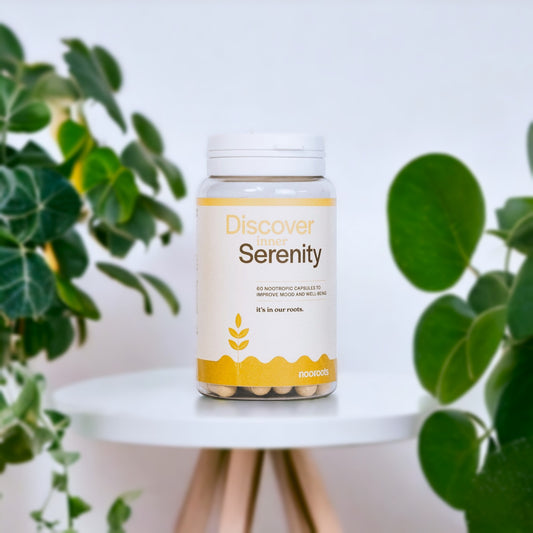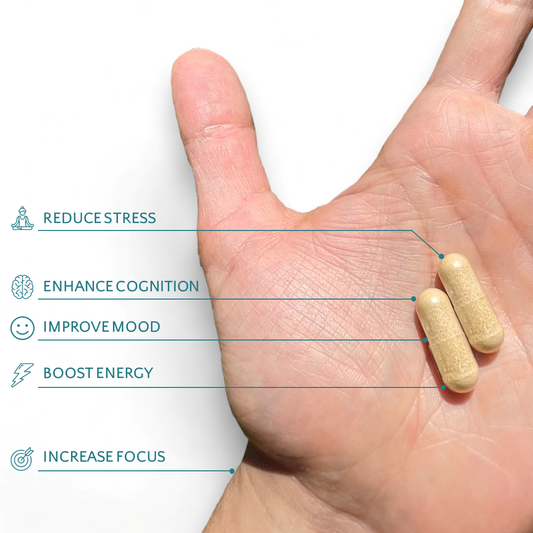Expert Writer and Contributor ✓
About the Author
Charlotte was awarded a Master of Science degree in chemistry from the University of Bristol. She is currently completing a PhD at the University of Leeds.
About the Contributor
Mus was awarded a Master of Science degree in Medical Biotechnology and Business Management from the University of Warwick.
At the turn of the 20th century there was a buzz reverberating through-out the scientific community. Interest in human nutrition was growing. Fast.
A string of recent discoveries – Vitamin B1 (Thiamine), Vitamin B2 (Riboflavin) and Vitamin B3 (Niacin) – transformed our view on the human diet. Caused us to re-think our relationship with all the enticing varieties of food. No longer was storing excess body fat a symbol of wealth.
Above all else, the link between food and disease caught the imagination of many scientists. Like sheep, scientist flocked to the budding new field of human nutrition. Who would be the next to find a new Vitamin that could cure disease? Perhaps win a Nobel Prize. Or at the very least enter the human nutrition hall of fame.
The race was alive and well.
One man, an American Biochemist named Roger J. Williams, pulled ahead of the flock. He had a leading role in the discovery of not one, but three B-vitamins. No mean feat by the scientific standards of any age.
Our story starts in 1931. A year more commonly associated with the opening of the Empire State, the invention of the electric razor, instant coffee, ballpoint pen, or the Dust Bowl years causing drought in the Great Plains.
Events that (literally) re-shaped the world. But instead of looking up at the changing world around him, Roger was peering down. Focused on the invisible world of micro-organisms. During his studies, he noticed an interesting connection between one particular organism, Saccharomyces cerevisiae otherwise known as Yeast, and Vitamin B5 (Pantothenic Acid).
Roger observed how Yeast would grow when in the presence of Pantothenic Acid. So what? Well as it turns out, Vitamin B5 (Pantothenic Acid) done more than just grow microbes. Our brains contain high amounts of it. B5's effects on brain function are, simply, remarkable.
If you're looking to start taking Vitamin B5 (Pantothenic Acid) as a supplement, you can learn more about our Mood & Wellbeing Nootropic Supplement at nooroots. If you have any questions after reading this post, you can either visit our support resources or simply contact us via our online form.
Contents
- What is Vitamin B5 (Pantothenic Acid)?
- Vitamin B5 (Pantothenic Acid) Deficiency
- Vitamin B5 (Pantothenic Acid) Benefits
- Vitamin B5 (Pantothenic Acid) Mechanism of Action
- Vitamin B5 (Pantothenic Acid) Side Effects
- Recommended Dosages of Vitamin B5 (Pantothenic Acid)
- Best Natural Food Sources of Vitamin B5 (Pantothenic Acid)
Vitamin B5 (Pantothenic Acid): A Health Guide to Safe and Effective Supplementation

What is Vitamin B5 (Pantothenic Acid)?
Pantothenic acid (or pantothenate), is a member of the B-vitamin family of eight water-soluble essential nutrients. It is also known as vitamin B51,2.
First discovered in 1931 by Roger J. Williams, he named it after the Greek word ‘panthos’. This means, ‘from all sides’, due to its prevalence in our diets1,3,4.
Pantothenic acid is especially important for boosting our brain performance and cognitive functioning, as it plays a key role in the synthesis of neurotransmitters and protection of neurons.
Vitamin B5 (Pantothenic Acid) Deficiency
Detecting the effects of pantothenic acid deficiency is difficult, as it usually coincides with the deficiency of other important vitamins! However the following effects have been found2,4:- Burning hands and feet
- Headache
- Fatigue
- Stomach upset
- Restlessness
Vitamin B5 (Pantothenic Acid) Benefits
Pantothenic acid is particularly important when it comes to healthy brain function, but it also boasts many other benefits, that include:
- Cognitive enhancer: A high amount of pantothenic acid is found in the human brain, suggesting that this wonder-vitamin is needed for protecting healthy brain function5.
- Lowered cholesterol: In recent studies, pantothenic acid has been observed to decrease the amount of harmful LDL cholesterol in the blood by ~ 20%2!
- Cell protector: Pantothenic acid treatment has been demonstrated to protect cells against oxidative stress, and enhance energy production from carbohydrates, fats and proteins6.
Vitamin B5 (Pantothenic Acid) Mechanism of Action
Pantothenic acid is made into acetyl-coenzyme A (acetyl-CoA) in the body, which is used in over 70 essential enzymatic pathways! For example:- It plays a vital role in the Krebs cycle. This is a series of reactions to get energy from the food we eat. Acetyl-CoA is important for metabolism in our organs and brain6.
- Acetyl-CoA is the precursor to the neurotransmitter, acetylcholine. Neurons in our brain need acetylcholine to keep transmitting signals effectively5,7–9!
- Acetyl-CoA is needed for the cerebral synthesis of myelin. Myelin is the insulating sheath for neurons that acts as a protective layer, enhancing the efficiency of neurotransmission5,8.
Therefore, pantothenic acid is a cognitive enhancer and protects against neurodegeneration. If that wasn’t enough, it also reduces cell damage, and has been proven to reduce harmful cholesterol levels in the blood.
Vitamin B5 (Pantothenic Acid) Side Effects
Pantothenic acid is very safe to take, even up to 1g per day! Only when doses reach excessively high levels (e.g. 10g per day), do the following mild symptoms occur2,4,10:- Diarrhoea
- Stomach upset
Recommended Dosages of Vitamin B5 (Pantothenic Acid)
The Nutrient Reference Value (NRV) for Vitamin B5 (Pantothenic Acid) is 6mg (milligram). No safe upper limit (SUL) have been established for Vitamin B5 (Pantothenic Acid). Doses up to 10 grams have recorded no negative effects on people.
Learn More About NRV and SUL
The NRV and SUL are two values assigned to vitamins and minerals that are designed to provide guidance on how much of a specific nutrient can be consumed.
NRV can be defined as the amount of a specific nutrient needed to adequately meet known nutritional deficiencies. Whereas the SUL is the highest level of nutrient intake that is likely to pose no risk of bad health effects for almost all individuals in the general population.
It is very safe to consume levels of nutrients greater than the NRV as long as the intake is below the SUL.
At nooroots, we take both these values into consideration when performing research and product development. We work with our scientists and partners to select a nutrient level that is both safe and effective.
Best Natural Food Sources of Vitamin B5 (Pantothenic Acid)
Here are the top 10 foods rich in Pantothenic Acid:
- Shiitake Mushrooms
- Salmon
- Avocados
- Lean Chicken Breast
- Beef
- Sunflower Seeds
- Whole Milk
- Lean Pork Chops
- Sweet Potatoes
- Lentils
*data sourced from My Food Data
Conclusion
In the early 1900’s it felt like new insights into human health and nutrition were being unearthed every other year. The B-Complex vitamins were growing in number - B1, B2, B3 – all changing our view on the human diet in their own way. Then by observing and studying creatures invisible to the naked eye, Roger J. Williams created much fanfare (as much as you can in the science world) when he introduced a new member to the family.
Roger characterized Vitamin B5 (Pantothenic Acid) in 1931 and it soon joined its relatives. Found in high amounts in the human brain, Pantothenic Acid has been demonstrated to be an effective cognitive enhancer, help decrease harmful cholesterol, and protect different types of cells in our body.
No negative effects have been shown on people up to 10 grams. Making B5 one of the safest B-Vitamins. It must be noted that nowhere near that amount is needed to feel the positive benefits of this vitamin. Doses as low as 6mg have been shown to be effective.
If you're looking to start taking Vitamin B5 (Pantothenic Acid) as a supplement, you can learn more about our Mood & Wellbeing Nootropic Supplement at nooroots.
Learn more about the other vitamins, minerals and plant extracts we use to give your brain a daily boost
- Vitamin B9 (Folate)
- Ashwagandha
- Vitamin B3 (Niacin)
- Ginkgo Biloba
- Vitamin B6 (Pyridoxine)
- Guarana Seeds
Evidence
- Pantothenic Acid. Linus Pauling Institute. https://lpi.oregonstate.edu/mic/vitamins/pantothenic-acid (accessed 2022-05-16).
- Office of Dietary Supplements - Pantothenic Acid. https://ods.od.nih.gov/factsheets/PantothenicAcid-HealthProfessional/ (accessed 2022-05-16).
- Kelly, G. S. Pantothenic Acid. Alternative Medicine Review 2011, 16 (3), 263–275.
- Sampedro, A.; Rodriguez-granger, J.; Ceballos, J.; Aliaga, L. Pantothenic Acid: An Overview Focused on Medical Aspects.
- Xu, J.; Patassini, S.; Begley, P.; Church, S.; Waldvogel, H. J.; Faull, R. L. M.; Unwin, R. D.; Cooper, G. J. S. Cerebral Deficiency of Vitamin B5 (d-Pantothenic Acid; Pantothenate) as a Potentially-Reversible Cause of Neurodegeneration and Dementia in Sporadic Alzheimer’s Disease. Biochemical and Biophysical Research Communications 2020, 527 (3), 676–681. https://doi.org/10.1016/j.bbrc.2020.05.015.
- SM, S.; HN, S.; NA, E.; AS, H. Curative Role of Pantothenic Acid in Brain Damage of Gamma Irradiated Rats. Ind J Clin Biochem 2018, 33 (3), 314–321. https://doi.org/10.1007/s12291-017-0683-0.
- Gominak, S. C. Vitamin D Deficiency Changes the Intestinal Microbiome Reducing B Vitamin Production in the Gut. The Resulting Lack of Pantothenic Acid Adversely Affects the Immune System, Producing a “pro-Inflammatory” State Associated with Atherosclerosis and Autoimmunity. Medical Hypotheses 2016, 94, 103–107. https://doi.org/10.1016/j.mehy.2016.07.007.
- Ismail, N.; Kureishy, N.; Church, S. J.; Scholefield, M.; Unwin, R. D.; Xu, J.; Patassini, S.; Cooper, G. J. S. Vitamin B5 (d-Pantothenic Acid) Localizes in Myelinated Structures of the Rat Brain: Potential Role for Cerebral Vitamin B5 Stores in Local Myelin Homeostasis. Biochemical and Biophysical Research Communications 2020, 522 (1), 220–225. https://doi.org/10.1016/j.bbrc.2019.11.052.
- Follis, R. H.; Wintrobe, M. M. A Comparison of the Effects of Pyridoxine and Pantothenic Acid Deficiencies on the Nervous Tissues of Swine. J Exp Med 1945, 81 (6), 539–552.
- PANTOTHENIC ACID (VITAMIN B5): Overview, Uses, Side Effects, Precautions, Interactions, Dosing and Reviews. https://www.webmd.com/vitamins/ai/ingredientmono-853/pantothenic-acid-vitamin-b5 (accessed 2022-05-16).





